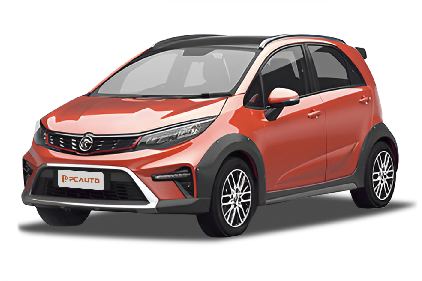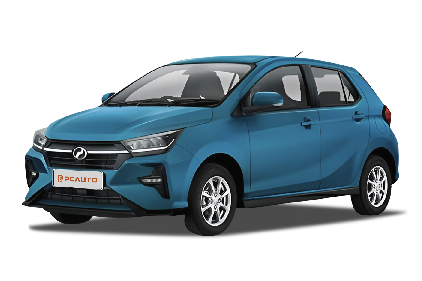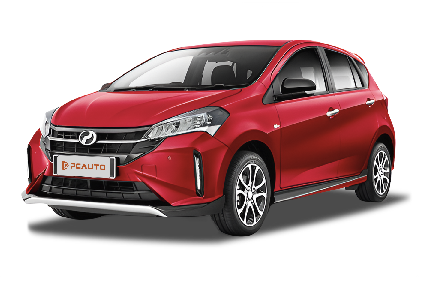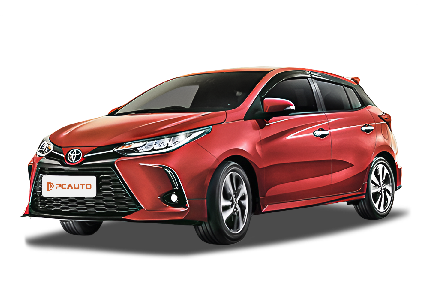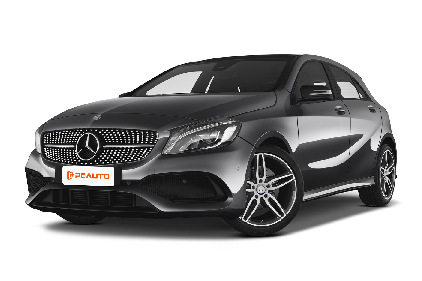Q
What is the PCD Size of Perodua Axia?
The PCD (Pitch Circle Diameter) of the Perodua Axia is 100mm, which means its wheel hub bolt holes are distributed on a circle with a diameter of 100mm. Usually, it is fixed with 4 bolts. This specification is quite common among small cars in the Malaysian market. For example, models like the Proton Saga also use the same PCD size. Understanding the PCD size is very important for car owners when replacing wheels or upgrading tires. You must ensure that the PCD of the new wheels is the same as that of the original vehicle; otherwise, it may lead to installation mismatches or potential safety hazards when driving.
In addition to PCD, when replacing wheels, you also need to pay attention to the center bore diameter (CB) and the offset value (ET). These parameters together determine whether the wheels are suitable for the vehicle. If you plan to modify the wheels of your Axia, it is recommended to choose certified products and consult professional technicians to ensure compatibility and safety. At the same time, after modification, you also need to comply with the regulations of the Malaysian JPJ to avoid affecting the vehicle's annual inspection or insurance rights.
Q
When is the Launch Date of Proton Persona?
The latest model of the Proton Persona was officially launched in Malaysia on May 15, 2024. This Class B sedan continues Proton's consistent feature of high cost - effectiveness. It is equipped with a 1.6L naturally - aspirated engine and a CVT transmission. At the same time, it comes with more advanced intelligent connectivity systems and safety configurations, such as a 360 - degree panoramic camera and an Advanced Driver Assistance System (ADAS), which makes it very suitable for local consumers who value practicality and a sense of technology.
As a national brand in Malaysia, the Persona series has been a popular choice since its launch in 2007. In this update, the exterior design features more sporty lines, and the interior materials have also been upgraded, further enhancing its market competitiveness.
For car buyers with a budget between 80,000 and 100,000 ringgit, the Persona offers balanced performance and configurations. Its fuel economy and local after - sales service network are also significant advantages. It is recommended that interested consumers visit the nearby Proton showrooms to test - drive and experience the actual performance of the vehicle.
Q
how long to charge tesla model y
The charging time of the Tesla Model Y depends on several factors, including the power of the charging device, the remaining power of the battery, and the ambient temperature, etc. In Malaysia, if you use Tesla's Supercharger, it usually takes about 30 minutes to 1 hour to charge from a lower level to around 80%. While using a normal AC charging pile, it may take 6 hours to 12 hours to fully charge.
Q
What Colors Does BYD Sealion 7 Have? Which Color Do You Like?
The BYD Sealion 7 offers a variety of high - end car colors, each with a unique design concept. Cosmos Black showcases a deep and mysterious visual effect. The paint surface contains special metal particles, which will sparkle like stars under different lighting conditions. It's suitable for consumers who pursue an elegant and business - like style.
Aurora White uses a pearl - effect paint process. The surface has a delicate pearlescent sheen, presenting a pure and high - end feel like ice and snow. Meanwhile, it has good dirt - resistance.
Atlantis Grey is a unique gray paint with a blue tint. Inspired by the legendary sunken continent, it combines a cold look with a sense of future technology.
Shark Grey is a darker gray with a more sporty style. Resembling the power of an ocean predator, it looks particularly outstanding when paired with the car's dynamic lines.
All these colors adopt BYD's eco - friendly water - based paint technology. They not only offer excellent visual effects but also have good weather and corrosion resistance. When choosing a color, Malaysian consumers can consider their personal preferences and usage scenarios. For example, white and light gray are more suitable for hot climates, while dark colors can better highlight the car's luxurious texture.
Q
What Segment Does Honda Civic Type R Belong to?
The Honda Civic Type R belongs to the high - performance hatchback (Hot Hatch) segment. It is a high - performance version developed by Honda based on the regular Civic, targeting consumers who pursue driving pleasure and track performance. In the Malaysian market, the Civic Type R is well - known for its 2.0 - liter VTEC turbocharged engine (capable of delivering 315 horsepower) and front - wheel drive layout. It is paired with a 6 - speed manual transmission and a limited - slip differential, emphasizing a direct driving experience.
This model is usually classified as a C - Segment performance car. However, due to its track - tuned setup and aggressive appearance (such as a large rear wing and wide - body kit), its actual positioning is more towards professional driving enthusiasts rather than ordinary family car buyers. It's worth noting that the Civic Type R in Malaysia is imported through official channels. It is fully adapted to the tropical climate and local fuel quality, and Honda Malaysia provides factory warranty services, enabling owners to legally enjoy high - performance vehicles while getting after - sales support.
For owners who are keen on vehicle modification, they need to be aware of the regulations on vehicle modification set by the JPJ in Malaysia, especially the compliance of the exhaust system and appearance kits. It is recommended to give priority to factory - approved upgrade parts to meet local regulatory requirements.
Q
What engine is a Mazda 2 equipped with ?
The Mazda 2 is equipped with a 1.5L naturally aspirated engine with an NA intake system, an inline (L) cylinder configuration, and four cylinders. This engine delivers a maximum horsepower of 114PS, with peak power output at 6000rpm and maximum torque of 149N·m at 4000rpm.
The engine provides stable power output to meet daily driving demands. It incorporates multiple advanced technologies, such as an automatic start-stop system that shuts off the engine during brief stops and restarts when moving off, helping to save fuel and reduce emissions. The hill-start assist function prevents rollback when starting on inclines, enhancing driving safety. Additionally, the engine is paired with an AT transmission for smooth gear shifts and improved driving comfort.
Q
How many kilometers can a Jaecoo J7 drive on a full tank?
The Jaecoo J7 comes in both fuel-powered and plug-in hybrid versions, and the full-tank driving ranges vary between different versions. The fuel-powered version has a fuel tank capacity of 51 liters and a combined fuel consumption of 7 liters per 100 kilometers. When the tank is full, it can travel approximately 728 kilometers (51 ÷ 7 × 100 ≈ 728). The plug-in hybrid version has a fuel tank capacity of 60 liters, and the official combined fuel consumption is 4.7 liters per 100 kilometers. When the tank is full, it can travel about 1277 kilometers (60 ÷ 4.7 × 100 ≈ 1277). Moreover, its official pure-electric driving range is 106 kilometers. If the pure-electric range is included in the total range, the combined range will be even longer. These figures are theoretical values, and the actual driving range will be affected by various factors such as driving habits, road conditions, and vehicle load.
Q
How much horsepower does 2006 Toyota Mark X produce?
The 2006 Toyota Mark X has different powertrain options, each offering different horsepower outputs. The version equipped with a 2.5L V6 engine typically delivers a maximum power of 211 horsepower, while the 3.0L V6 variant produces approximately 231 horsepower.
As a mid-size sports sedan, the rear-wheel-drive Mark X, combined with different engine configurations, provides drivers with distinct driving experiences and performance characteristics. The higher-powered 3.0L version performs well in acceleration and overtaking, whereas the 2.5L model strikes a better balance between everyday usability and fuel efficiency - meeting different consumers' needs for performance and costs.






